NIL
College football needs Mike Leach plan in NIL era of change
JD Vance fumbles Ohio State title trophy at White House event Ryan Day and the Ohio State Buckeye’s football team were honored at the White House for their 2024 national championship victory. These problems aren’t unique, everyone. They’re just constantly viewed at surface level. The latest rage is this: the NFL Draft needs an opt […]
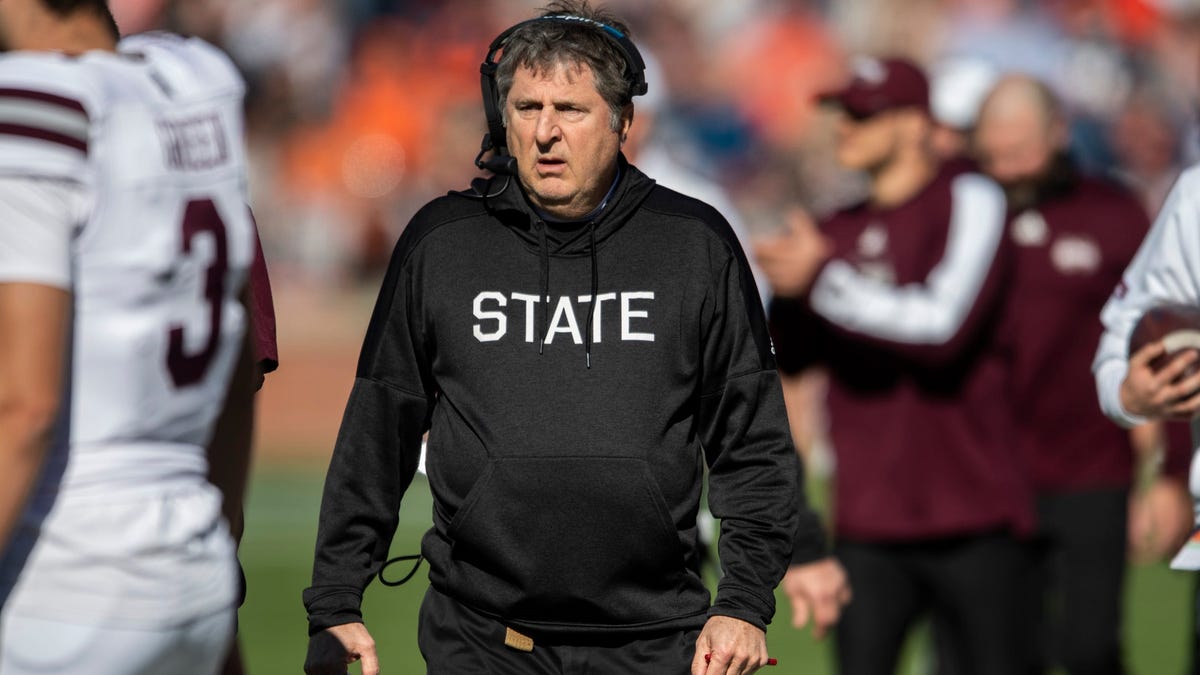
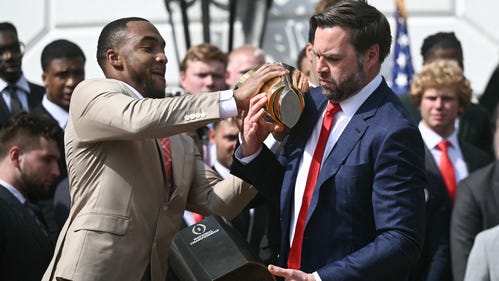
JD Vance fumbles Ohio State title trophy at White House event
Ryan Day and the Ohio State Buckeye’s football team were honored at the White House for their 2024 national championship victory.
These problems aren’t unique, everyone. They’re just constantly viewed at surface level.
The latest rage is this: the NFL Draft needs an opt out clause. If you don’t like where you’re drafted, you can go back to college football.
This, of course, is ludicrous.
But when Texas quarterback Quinn Ewers is selected in the seventh round, or Alabama quarterback Jalen Milroe – invited to the draft by the league – had to wait until the third round to be selected, maybe someone, somewhere is giving players bad information.
Or maybe they just wanted out of college football.
Years ago, I had a long conversation with then-UCLA quarterback Josh Rosen. Say what you want about his NFL flop, he was one of the rare, elite college players who saw beyond the surface — and wasn’t afraid to speak his mind.
Long before player empowerment was a thing, long before the NCAA caved in 2021 on NIL and free player movement to avoid losing the billions it eventually will under the House case and ensuing revenue sharing, Rosen was talking about finding a compromise.
One of his key points: many players leave after their junior seasons – no matter their grade from the NFL Draft advisory board – because school is simply not for them.
It doesn’t mean they can’t handle the academic workload or a suddenly unique public life, it just means they’re more comfortable in a professional environment where their entire focus is football.
It is here where we introduce the late, great Mike Leach, who had a whopper of plan a couple of years ago that was scoffed and laughed at — and now, in these ever-changing days of the sport, looks incredibly insightful.
A year after the NCAA threw open the barn doors on NIL and free player movement, Leach explained to me an idea he had for optional learning tracks for football players at major universities.
“We can ignore the reality of the situation, or we can face it and do something about it,” Leach said.
This from the guy who had a plaque in his office – at Texas Tech, Washington State and Mississippi State – that read, “You’re either coaching it, or allowing it.”
For far too long, the NCAA has been allowing it.
Leach’s plan is simple: there are two academic tracks for football players at major universities. When a high school recruit signs a letter of intent, he chooses the specific academic track — student athlete, or learning professional.
Leach estimated then that the student athlete track (the current academic model) is for about about 90 percent of players. That was before the explosion of NIL and projected revenue sharing.
The student athlete number may have drastically decreased since.
The student athlete track consists of the current benefits and a stipend, which would now be revenue share. Players can’t be cut for playing ability, but can be cut for breaking rules. No trades, no draft.
But there’s a sweet, sweet carrot dangling out there: if players graduate in four years, and play all four seasons of eligibility at the same school, they receive a significant retention bonus.
If players transfer at any time, or don’t graduate, they’re ineligible for the retention bonus.
“I don’t like taking the degree out of the equation,” Leach said. “Degrees help lives, help families, help generations.”
Then there’s the learning professional track, the group of players Leach said more closely align with the current explosion of NIL and player movement.
It begins with a deadline for high school players to declare the learning professional track, and once it passes, there will be a draft. That’s right, a draft.
“Every other league does it,” Leach said. “The crummiest sports league or the best, they draft. Little league has a draft.”
And that’s part of the gamble for young players. If you enter the learning professional track, you can be drafted by any school.
You aren’t choosing your school, they’re choosing you. This brilliant move also brings parity into the equation.
Another unintended, yet wildly positive, consequence of Leach’s plan.
“There’s no bargaining and extorting (NIL) money from schools, playing one against the other,” Leach said. “Like hell, you will. Not here. We’ll call you when you’re drafted, and you’ll know what team you’re playing for.”
There’s no cap on NIL money, and a player can make whatever the market will bear. Players can be cut at any time for any reason, just like the NFL. Players can be traded.
Players can move freely between schools annually, but within a one-week window after the season.
The learning professional track will include academic courses that directly affect individual growth. Finance and investing, kinesiology, psychology, and the like.
“Everyone wants guardrails to this deal,” Leach said. “Well, here they are.”
For decade upon decade, the NCAA has been a reactionary body. Never leading, always reacting to the latest lawsuit ― and losing nearly every single time in every single major lawsuit involving player vs. university.
The NCAA isn’t coaching it, it’s allowing all of this unraveling of the sport to go unchecked.
Maybe it’s time to change course.
Matt Hayes is the senior national college football writer for USA TODAY Sports Network. Follow him on X at @MattHayesCFB.
NIL
An NIL framework could be on the way. What does it mean for UF?
The NCAA has been searching for a framework to regulate name, image and likeness, or NIL, since the policy was established in June 2021. Four summers later, a possible foundation is near, but no change will be without implications, especially for top athletic programs like the University of Florida. These changes have loomed for almost […]



The NCAA has been searching for a framework to regulate name, image and likeness, or NIL, since the policy was established in June 2021. Four summers later, a possible foundation is near, but no change will be without implications, especially for top athletic programs like the University of Florida.
These changes have loomed for almost a year. President Donald Trump publicly considered an executive order May 2 to examine the state of NIL payments. Schools and athletes must heavily consider how these developments will impact their programs.
The prominent NIL discussion surrounds the House settlement. Lawsuits by current and former college athletes are pursuing a settlement of nearly $2.8 billion that will attempt to establish a future framework for NIL agreements.
Philip Nickerson, a Troutman Pepper Locke law firm associate who represents universities and collectives in NIL matters, said the settlement contains four major parts: allowing schools to pay athletes themselves for use of their NIL with an annual budget of $20.5 million, the potential for roster caps, NIL compliance and enforcement oversight, and backpay for former and current athletes who were unable to profit from their NIL.
In his personal interpretation, this could mean many of UF’s resources responsible for its success could become less prominent, Nickerson said.
“It puts a limit on how much they can spend, which means that smaller schools that maybe don’t have the same athletic budget or donor base have a chance to compete for the prized recruits and remain competitive,” Nickerson said. “I think it’s going to level the playing field across all college sports.”
UF would be forced to rely on its coaches and recruiting staff even more to out-recruit other schools for star high school athletes and in the transfer portal.
Christopher Batts, an attorney at ShuffieldLowman, represents students and institutions navigating NIL deals.
“I think the real impact is going to be on the school, and then that’s going to trickle down to the athletes,” Batts said. “Trying to divide up $20.5 million amongst a bunch of really good athletic programs is going to be way more difficult than for schools that are known just for basketball or just for football.”
Title IX compliance will complicate the issue, he said, but it will also prevent schools from putting all of the allotted $20.5 million into their higher-revenue sports like football and men’s basketball.
Even with these changes, Batts said there’s likely more to come.
“I think it opens just as many new issues as it resolves,” he said. “It doesn’t address Title IX. It doesn’t introduce collective bargaining.”
Enjoy what you’re reading? Get content from The Alligator delivered to your inbox
UF Director of NIL Strategy Ben Chase said Florida is more than ready to handle whatever changes head its way.
“Our goal here at Florida is to make sure that we give our athletes the opportunity to compete at a high level across all the sports we have,” Chase said. “There’s a lot of schools out there that are cutting sports, including at the Power Four level, and we don’t plan on doing that.”
He doesn’t foresee the changes affecting investments from donors and partners who have been a huge part of the success of Gator sports, he said. Instead, Chase sees benefits in the new settlement because it allows the UF Athletic Department to share the revenue with its athletes.
Chase said he’s excited about the opportunities UF’s athletes will have going forward, including more NIL deals.
“I think that where we are headed is true corporate NIL partnerships that are with athletes that may have never gotten those deals before,” he said.
A decision is expected to be made on the settlement in the next few months if executive action isn’t taken sooner.
Contact Ava DiCecca at adicecca@alligator.org. Follow her on X @avadicecca24.
The Independent Florida Alligator has been independent of the university since 1971, your donation today could help #SaveStudentNewsrooms. Please consider giving today.
NIL
Justice Haynes orchestrates a whirlwind of change with groundbreaking NIL deal for Michigan
A New Era for Michigan Football Justice Haynes, a standout figure in collegiate athletics, has recently ignited conversations across the sports landscape with a pioneering NIL (Name, Image, Likeness) agreement that magnifies the progressive shift underway at Michigan. This development marks a significant milestone not only for Haynes personally but also for the Wolverines’ program, […]
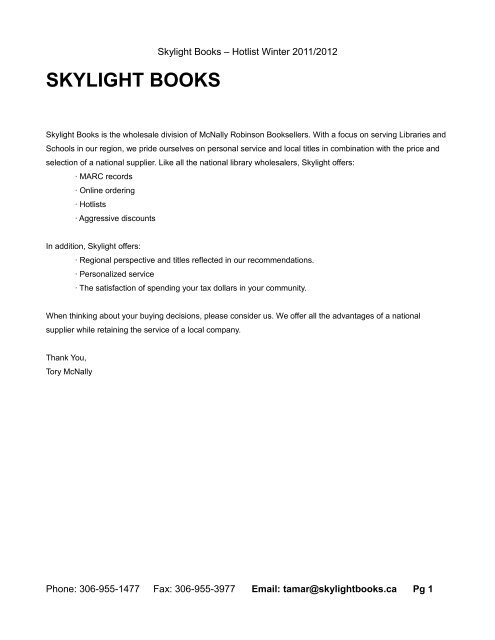


A New Era for Michigan Football
Justice Haynes, a standout figure in collegiate athletics, has recently ignited conversations across the sports landscape with a pioneering NIL (Name, Image, Likeness) agreement that magnifies the progressive shift underway at Michigan. This development marks a significant milestone not only for Haynes personally but also for the Wolverines’ program, a testament to Michigan’s unwavering commitment to its athletes under the transformative leadership of head coach Sherrone Moore.
The Sherrone Moore Vision
Head coach Sherrone Moore has been at the helm of Michigan’s endeavors to harness the power of NIL opportunities for its athletes, a task he famously describes as occupying “50% of my day, if not more.” Moore’s devoted focus on securing equitable compensation for his players underscores a broader mission: to ensure that student-athletes receive the recognition and financial rewards they deserve. This investment of time and energy is beginning to yield significant returns, as evidenced by Haynes’ groundbreaking deal.
Justice Haynes: A Trailblazer in the Making
Justice Haynes has become an emblem of the evolving intersection between sports and branding, setting a new precedent in collegiate athletics. His unique NIL agreement is not just a personal triumph but a beacon for fellow athletes navigating this new territory. By taking this bold step, Haynes exemplifies the modern athlete’s dual role as both competitor and entrepreneur, showing that excellence on the field can indeed be paralleled by strategic acumen off it.
Impact on the Wolverines Program
The implications of Haynes’ achievement extend far beyond an individual victory; they symbolize the collective progress of the Michigan Wolverines. Under Moore’s guidance, the program is fostering an environment where athletes can thrive not just through their sporting prowess but also through the burgeoning opportunities NIL presents. This holistic approach to athlete development can attract future talent to Ann Arbor, making Michigan a desirable destination for aspiring stars who wish to excel in both sports and personal branding.
Reflecting on the Future
As Justice Haynes blazes the trail with his innovative NIL deal, he not only strengthens his own brand but also sets a robust example for his peers. His success serves as a reminder of the evolving landscape of collegiate sports, where the power dynamics are shifting, offering athletes new platforms for growth and expression. Michigan, with its strategic embrace of these changes, is well-positioned to lead in this new era, offering a blueprint for integrating athletic achievement with personal and financial development.
NIL
The Economic Costs of Wearing Guardian Caps In the NFL
Guardian caps are soft-shell pads that are attached to the outside of helmets to decrease the impact of head contact and reduce the number of concussions football players suffer. Since their invention, over 500,000 football players across the country at every level have been using guardian caps, including the NFL, which mandated their use in practice for certain positions […]

![]()
Indifference curves are tools economists use to model the utility or satisfaction individuals derive from different combinations of two competing goods or factors. In this case, the factors are ‘swag’ and ‘safety.’ Players wear guardian caps only if their safety outweighs the cost of looking less stylish.
A player who prioritizes long-term health and injury prevention will have a curve that values safety. A player who deeply values looking good and building a personal brand may have an indifference curve that bends in the opposite direction to heavily favor swag, showing they are willing to sacrifice a lot of safety for a little more style.
To quote NFL Hall-of-Famer Deion Sanders: “You look good you feel good, you feel good you play good, you play good they pay good, they pay good you live good…” Prime Time’s famous mantra captures the psychology of many NFL players in a single sentence.
In a league where contracts are short, careers are shorter, and public image can be just as important as performance, how you look on the field matters. NFL players are not just athletes–they’re brands. Their uniforms, cleats, visitors, and even celebrations are carefully curated parts of their identity that are scrutinized by millions of people every Sunday. A sharp or iconic look can lead to endorsement deals, jersey sales, and sponsorships. A bad look, however, can cost you recognition. NFL players are highly visible public figures, and their appearance is a critical aspect of how they market themselves.
Given the state of the NFL’s current helmet technology, many players feel like they must choose: Wear safe, ugly gear like guardian caps, or stick with traditional helmets and have more autonomy in their image. While the NFL can solve this problem by simply mandating guardian caps for both games and practices, that may only create further backlash from players who see it as infringing on their autonomy or damaging their brand. Instead, the NFL should prioritize innovation and developing newer, more advanced helmets with better protection. One helpful way to look at this is through the NFL’s helmet technology Production Possibilities Frontier (PPF).
In their current state, guardian caps grant players a higher level of safety than current helmet technology alone does (as demonstrated by the combination of swag and safety offered by a guardian cap being at a point above the current PPF). However, for players who prioritize swag, there is no intersection between the guardian cap tradeoff line and their indifference curve, meaning that these players would never opt to wear a guardian cap even with the safety benefits.
This should be the NFL’s path forward. This means investing in new helmet research, continuing to partner with forward-looking equipment manufacturers, and perhaps even allowing players to have a say in customizing their helmets. In so doing, the NFL can ‘push’ its PPF curve outward, offering helmets that look good and provide better protection.
The science is clear: concussions are dangerous, repeated head trauma even more so, and safer equipment reduces risk. The economics are also clear: adoption will remain limited unless safety gear complements player identity. Bridging that gap is the league’s responsibility.
Tyler Turman is an Acton Institute Emerging Leaders Fellow and partner with Stand Together’s Koch Internship Program.
NIL
Michigan's Elite RB Turns Heads by Making Major NIL Move
Michigan’s Elite RB Turns Heads by Making Major NIL Move originally appeared on Athlon Sports. The college football transfer portal saw over 4,000 entries between the winter and spring portal windows, allowing a plethora of teams to make significant additions. Advertisement Advertisement Advertisement Although there were plenty of talented players in the portal, one of […]
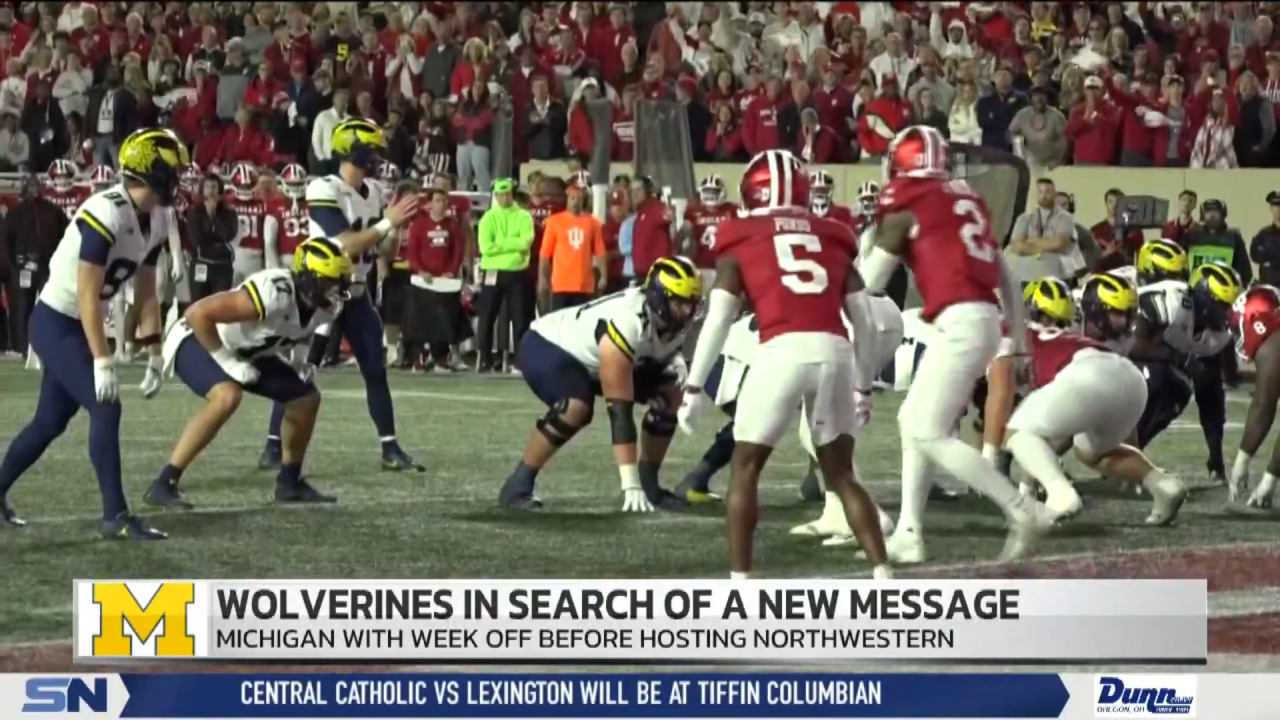

Michigan’s Elite RB Turns Heads by Making Major NIL Move originally appeared on Athlon Sports.
The college football transfer portal saw over 4,000 entries between the winter and spring portal windows, allowing a plethora of teams to make significant additions.
Advertisement
Although there were plenty of talented players in the portal, one of the hottest commodities was Alabama transfer running back Justice Haynes. The former five-star recruit spent two seasons in Tuscaloosa before deciding to transfer, with 247Sports ranking him as the No. 1 running back in the portal.
He ended up transferring to the program that handed Alabama its final loss of the season in the Michigan Wolverines, and will look to become the program’s featured back as it hopes to return to title contention.
While fans are already excited about his play on the field as he rushed for 51 yards on six carries in the team’s spring game, according to On3, they are also just as enthused about his ventures off of it. As shared to X on Monday, Haynes inked an NIL deal with Loom Juice, which will see him have an ownership stake in.
“Go blue! Loom juice will be stocked shortly,” wrote one fan.
Advertisement
“NIL! Go Blue,” exclaimed another.
“Remember when this was the vision for NIL instead of who has the biggest donor base,” suggested a third.
“Equity ownership stake. The 
“Actual NIL! Very refreshing to see,” said another.
“OWNERSHIP over ENDORSEMENT,” added another.

Team Blue running back Justice Haynes (22).Junfu Han / USA TODAY NETWORK via Imagn Images
According to the company’s site, Loom Juice is a “juice water” with no added sugars. They were named one of the best new brands in 2024 by BevNet.
As for Haynes, On3 currently has his NIL Valuation at $684,000, with this being his first recorded NIL deal since transferring to Michigan. The Wolverines will open the 2025 season against the New Mexico Wolfpack on Aug. 30.
Advertisement
Related: Rule of Legendary NFL Coach May Prevent Arch Manning From Entering 2026 NFL Draft
This story was originally reported by Athlon Sports on Jun 2, 2025, where it first appeared.
NIL
Virginia Tech baseball
The Virginia Tech Hokies finished the 2025 baseball season with a 31-25 record, including a disappointing 12-18 mark in ACC play. After defeating Stanford in the first round of the ACC Baseball Tournament, the Hokies fell to No. 14 Clemson in the second round and suddenly their season was over. Head coach John Szefc made […]



The Virginia Tech Hokies finished the 2025 baseball season with a 31-25 record, including a disappointing 12-18 mark in ACC play. After defeating Stanford in the first round of the ACC Baseball Tournament, the Hokies fell to No. 14 Clemson in the second round and suddenly their season was over.
Head coach John Szefc made some moves once the season ended, firing pitching coach Ryan Fecteau. Fecteau has been with Szefc since his final season at Maryland in 2017 and all eight seasons in Blacksburg. Also, the director of player development, Kyle Sarazin, was let go.
Advertisement
Now, for the players. The NCAA transfer portal opened this week, and two players—junior first baseman Garrett Michel and freshman pitcher Tucker Swails—announced they are entering it.
Michel hit .272 with a .398 OBP and .866 OPS. The Denver, North Carolina, native battled injuries during his time with the Hokies. He could be drafted in the 2025 MLB draft, too.
Swails is a native of Patrick County High School in nearby Stuart, Virginia. The 5-foot-11, 185-pounder redshirted during his only season at Virginia Tech. Swails starred as a pitcher and shortstop in high school.
We wish the best for these two Hokies as they move forward in their careers.
Advertisement
More from gobblercountry.com:
NIL
Texas OF Donovan Jordan enters the NCAA transfer portal
Texas Longhorns freshman outfielder Donovan Jordan entered the NCAA transfer portal on Monday. The 6’1, 210-pounder redshirted at Texas during the 2025 season after signing with the previous coaching staff ranked as the No. 429 player nationally and the No. 73 outfielder, according to Perfect Game. Advertisement Advertisement Advertisement Jordan arrived on the Forty Acres […]

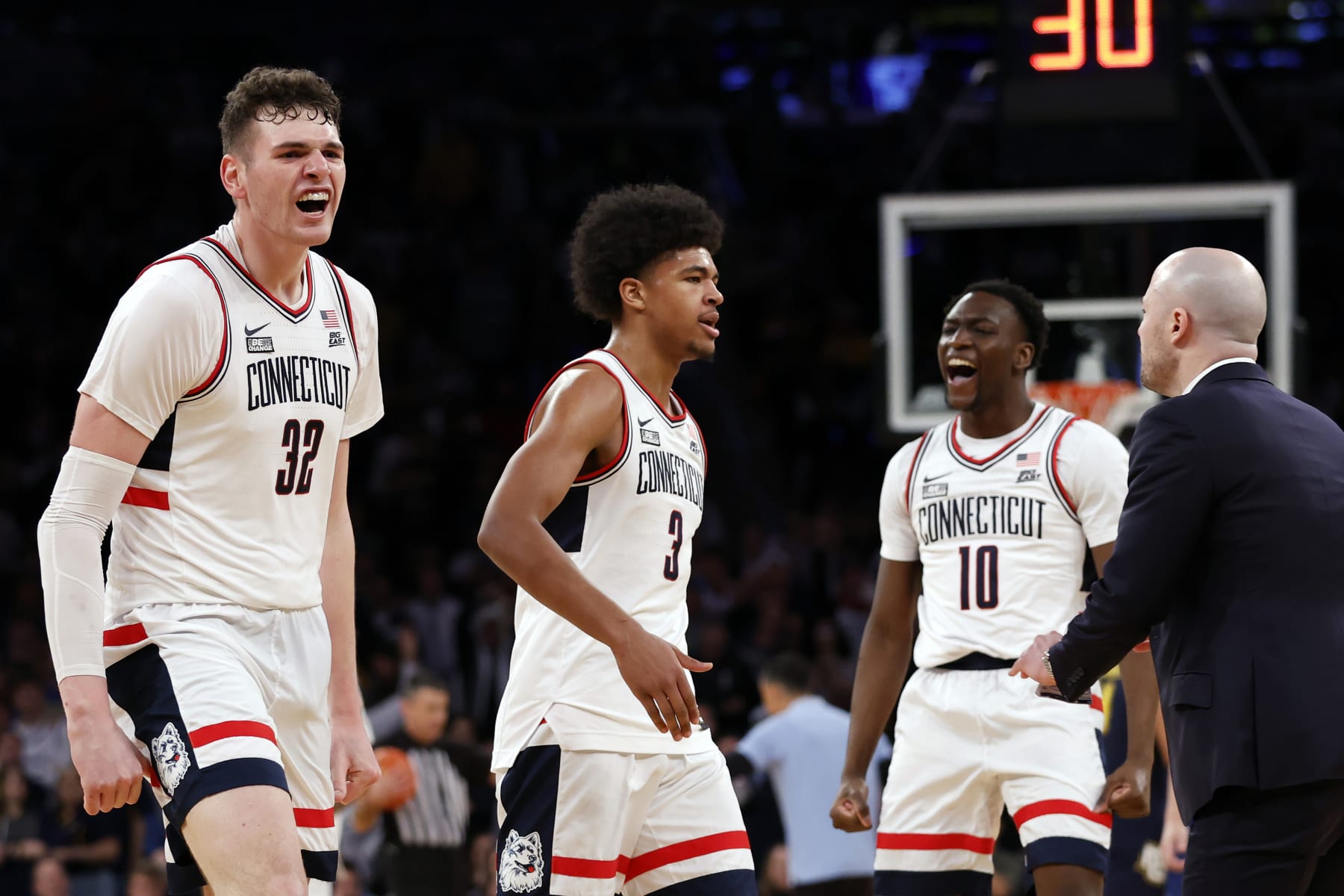

Texas Longhorns freshman outfielder Donovan Jordan entered the NCAA transfer portal on Monday.
The 6’1, 210-pounder redshirted at Texas during the 2025 season after signing with the previous coaching staff ranked as the No. 429 player nationally and the No. 73 outfielder, according to Perfect Game.
Advertisement
Jordan arrived on the Forty Acres with a strong swing efficiency built on his hip rotation to produce exit velocities in the 86th percentile, but wasn’t able to find playing time in a deep outfield for the Longhorns.
Following Sunday’s season-ending loss to UTSA in the Austin Regional, Jordan is the third player to depart the program, joining freshman outfielder Matt Scott and freshman left-hander Chance Covert.
More from burntorangenation.com:
-

 College Sports2 weeks ago
College Sports2 weeks agoPortal Update – Basketball and Gymnastics Take Hits
-

 Rec Sports3 weeks ago
Rec Sports3 weeks agoThe Program, a New Basketball Training Facility, Opening in Greenpoint This September
-

 College Sports2 weeks ago
College Sports2 weeks agoPortal Update – Basketball and Gymnastics Take Hits
-

 Professional Sports2 weeks ago
Professional Sports2 weeks agoJon Jones answers UFC retirement speculation as fans accuse champion of 'holding the belt …
-

 NIL1 week ago
NIL1 week ago2025 NCAA Softball Tournament Bracket: Women’s College World Series bracket, schedule set
-

 Youtube3 weeks ago
Youtube3 weeks agoWhen Stephen Curry Shocked The World
-

 Youtube3 weeks ago
Youtube3 weeks agoTHE FINAL CALL: Golden State Warriors 2021-22 NBA Champions
-

 Health2 weeks ago
Health2 weeks agoBYU women's basketball guard injures ACL twice
-

 Youtube2 weeks ago
Youtube2 weeks agoXavier Legette taught Marty Smith his signature celly
-

 Youtube3 weeks ago
Youtube3 weeks agoThey need to add a gorilla next
(via @zackystrong.pt/TT)
















 COLLECTIVE COLLAPSE OF EPIC PROPORTIONS! | First Take
COLLECTIVE COLLAPSE OF EPIC PROPORTIONS! | First Take




















